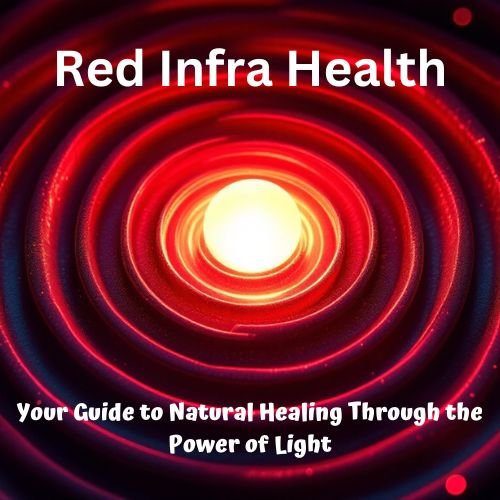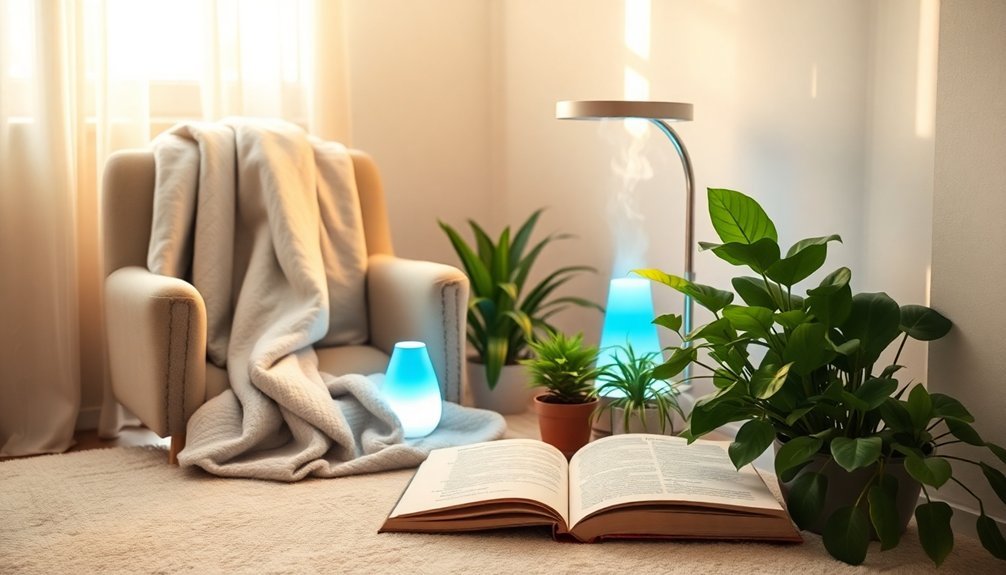LED therapy offers a promising natural approach to boost your bone density through red and near-infrared light treatments. You'll benefit from increased bone mineral density as the light stimulates osteoblast activity, enhances collagen production, and accelerates healing. The therapy works by triggering cellular mechanisms that improve blood flow, reduce inflammation, and boost your body's natural bone-building processes. Whether you choose a professional device or home treatment option, you'll need the right wavelengths (635-850nm) and proper treatment duration for ideal results. Discover how this breakthrough technology can transform your bone health journey.
Understanding LED Therapy Benefits

Thanks to recent technological advances, LED therapy has emerged as a promising treatment for improving bone health and density. This non-invasive treatment works by stimulating your cells' natural healing processes, leading to increased bone mineral density and improved bone structure.
When you undergo LED therapy, you'll benefit from enhanced cellular energy production as the light triggers chemical reactions in your cells' mitochondria. This boost in ATP energy promotes cell proliferation, particularly in fibroblasts and osteoblasts, which are essential for bone health.
You'll also experience improved blood flow to your bones, ensuring better nutrient delivery to injured or weakened areas. Professional athletes regularly use LED therapy for faster injury recovery and enhanced performance.
The therapy's ability to reduce inflammation while enhancing collagen production makes it particularly effective for bone healing. You'll find it helps accelerate recovery in fracture sites and extraction areas, while also supporting overall bone strength.
Research shows that bones treated with red light demonstrate increased osteoblast activity and bone neoformation compared to untreated bones. While LED therapy shouldn't replace conventional treatments, it's proving to be a valuable complementary approach to maintaining and improving your bone health.
How LED Light Heals Bones
The healing power of LED light therapy on bone tissue operates through multiple cellular mechanisms. When you receive LED treatment, specific wavelengths penetrate deep into your bone tissue, triggering a cascade of biological responses that enhance healing and bone formation. The energy from LED light is absorbed by your mitochondrial cells, stimulating increased cellular energy production.
| Process | Effect | Benefit |
|---|---|---|
| Osteoblast Activation | Increased bone matrix production | Faster bone formation |
| Cell Proliferation | Enhanced fibroblast and endothelial activity | Better collagen synthesis |
| Blood Flow Enhancement | Improved microcirculation | Increased nutrient delivery |
| Inflammation Control | Regulated cytokine levels | Ideal healing environment |
Your bone cells respond to LED therapy through two primary wavelengths: 660nm (red) and 850nm (near-infrared). These wavelengths stimulate your osteoblasts to deposit new bone material while simultaneously regulating osteoclast activity to prevent excessive bone resorption. You'll experience enhanced bone density as the therapy increases mineralization and strengthens the bone matrix. The treatment's effectiveness depends on proper dosing parameters, including intensity and duration. For best results, you'll typically need consistent exposure at lower intensities over extended periods, allowing your bone tissue to respond progressively to the therapeutic light.
Science Behind Bone Density Enhancement

Powerful biological mechanisms drive bone density enhancement through a complex interplay of hormonal signals, physical activity, and nutritional factors. Your hypothalamus plays a vital role, particularly through estrogen signaling that regulates how your body allocates energy between bone growth and other processes. Studies show that estrogen receptor deletion in specific brain regions can dramatically increase bone density in females.
When you engage in weight-bearing exercises, you're activating site-specific bone remodeling, where mechanical loading triggers new bone formation. You'll see the most substantial improvements in areas directly stimulated by exercise, which is why targeted strength training is so effective for building bone density.
Your diet markedly influences this process. You'll need adequate calcium and vitamin D as foundational nutrients, while vitamin K2 helps activate osteocalcin to bind calcium to your bones. Protein intake, especially from animal sources, contributes to higher bone mass density.
When you combine proper nutrition with regular physical activity – aim for 150 minutes weekly – you're creating ideal conditions for bone strengthening.
Near-infrared light therapy at around 850nm wavelength can enhance these natural processes. It penetrates deep into your tissue, promoting osteoblastic proliferation and collagen deposition, which are essential for maintaining strong, healthy bones.
Choosing Your LED Treatment Option
When you're deciding between professional and home LED devices for bone density treatment, you'll find that medical-grade options offer more powerful and precise therapy, though quality home devices can still provide meaningful benefits.
You'll want to look for devices that offer both red light (635-690nm) and near-infrared wavelengths (790-850nm), as these ranges work together to target different depths of bone tissue.
The most effective treatment combines the right wavelengths with proper treatment duration, so check that your chosen device meets ISO 13485 standards and provides clear guidance for ideal use.
Professional Vs Home Devices
Making an informed decision between professional and home LED devices for bone density treatment requires understanding their key differences.
Professional devices typically operate at ideal wavelengths around 850nm, providing deeper tissue penetration and superior bone regeneration results. They're held to strict medical standards like ISO 13485 and are backed by extensive clinical trials showing significant improvements in bone density.
Home devices, while less powerful, offer distinct advantages. You'll find them more cost-effective and convenient for regular use, with options like the MOVE+ Pro providing targeted treatment in the comfort of your home. They're user-friendly and often come with satisfaction guarantees, such as 30-day return policies.
When choosing between the two, consider your specific needs. Professional treatments provide higher-quality care under expert supervision, making them ideal for serious conditions like osteoporosis. You'll benefit from consistent application and proper monitoring.
However, if you're looking for ongoing maintenance or mild therapeutic effects, a home device can be effective. Remember that near-infrared wavelengths around 850nm are most beneficial for bone health, regardless of which option you choose.
Understanding Light Wavelengths
Through meticulous wavelength selection, you'll maximize the effectiveness of LED therapy for bone health. When choosing your LED device, focus on two key wavelength ranges: red light (635-660 nm) and near-infrared light (850 nm). Each wavelength serves a specific purpose in supporting bone density.
Red light at 635-660 nm helps reduce inflammation and supports bone remodeling. You'll find this wavelength particularly effective at reducing bone resorption and inhibiting osteoclast formation, which helps maintain healthy bone density.
Near-infrared light at 850 nm penetrates deeper into your tissues, making it ideal for treating bones beneath thicker layers of skin and muscle.
For the best results, you'll want to guarantee your device delivers the right power density, typically between 10-200 mW/cm². Position your device close to the treatment area to maintain effective power levels.
If you're targeting specific bone-related conditions, consider devices that offer both red and near-infrared wavelengths. This combination provides thorough coverage, as you'll benefit from both surface-level healing and deep tissue penetration.
Remember to consult your healthcare provider before starting treatment, especially if you have darker skin or pre-existing conditions.
Safe LED Treatment Guidelines

Before starting LED therapy for bone health, you'll need to follow specific safety guidelines to guarantee effective and risk-free treatment.
If you're using an at-home device, strictly follow the manufacturer's instructions regarding treatment duration and intensity. Don't exceed recommended exposure times, as overuse can lead to skin irritation.
You shouldn't use LED therapy as your sole treatment for bone health conditions. Instead, combine it with your doctor's prescribed treatments, a calcium-rich diet, and regular exercise.
If you have darker skin, be extra cautious as you're at higher risk for hyperpigmentation. Always protect your eyes during treatment, and never look directly at the LED lights.
If you're pregnant, breastfeeding, or have medical implants, consult your healthcare provider before starting LED therapy. The same applies if you're taking photosensitive medications.
For best results, consider using devices that combine red light (~660 nm) and near-infrared light (~850 nm), as this combination may enhance bone formation and collagen production.
Remember to maintain consistent treatment sessions over time, but don't start without first getting approval from your healthcare professional, especially if you have underlying medical conditions.
LED Success Stories
You'll find inspiration in real-world LED therapy success stories, including a notable case where an 18-month treatment led to significant bone density improvements in both spine and hip measurements.
The documented improvements show T-score enhancements from -3.4 to -2.9 in the spine and -1.7 to -1.5 in the hip, demonstrating LED therapy's potential for bone health transformation.
These success stories highlight how LED therapy, combined with thorough treatment approaches, can lead to measurable improvements in bone density while reducing fracture-related anxiety.
Real Recovery Results
Across the medical community, LED therapy success stories have emerged from both clinical trials and real-world applications. You'll find compelling evidence in dental implant studies, where patients using 635-nm LED therapy experienced enhanced bone density and improved implant stability. These results weren't just minimal improvements – they showed significant healing effects within days of treatment.
You can see the therapy's impact in osteoporosis treatment as well. Research shows that 635-nm LED exposure effectively reduces bone resorption by inhibiting osteoclast formation.
If you're an athlete, you'll be interested to know that both infrared and red light therapies are being used successfully to improve bone density and enhance physical performance.
When you look at the recovery process, LED therapy's benefits extend beyond just bone density. You'll experience reduced inflammation and pain relief, while your body benefits from increased collagen deposition. The most impressive results come from near-infrared wavelengths around 850 nm, as they penetrate deeper into tissue for better bone regeneration.
Whether you're recovering from an injury or seeking to prevent bone loss, LED therapy's documented success in both clinical trials and real-world applications offers a promising, non-invasive treatment option.
Healing Transformations Revealed
Real-world success stories bring LED therapy's clinical data to life through remarkable patient experiences. You'll find that dental patients receiving 635-nm LED therapy after implant procedures report markedly improved stability and faster healing times.
Athletes using infrared and red light stimulation have documented enhanced bone density alongside better physical performance, transforming their recovery periods.
Watch how LED therapy creates measurable changes in your body's healing response. You're likely to notice reduced pain and inflammation within weeks, as the 630-635nm wavelengths work to inhibit bone-degrading cells while promoting healthy bone formation.
If you're dealing with a fracture, you'll typically experience improved grip strength and witness positive changes in your radiographic scans, showing accelerated healing patterns.
What's particularly striking is how your body responds at the cellular level. You'll benefit from increased collagen production and enhanced blood circulation to affected areas, creating ideal conditions for bone regeneration.
While LED therapy isn't a standalone treatment for osteoporosis, it's proving to be a powerful complementary tool that's helping patients achieve better outcomes when combined with traditional treatments.
Next Steps for Bone Health

Taking charge of bone health requires a thorough approach that combines multiple strategies. You'll need to focus on maintaining a well-balanced diet rich in calcium, protein, and vitamin D while engaging in regular physical activity that includes both weight-bearing and resistance exercises.
Start by incorporating 30-40 minutes of targeted exercises 2-3 times weekly. Choose activities like brisk walking, jogging, or tennis for weight-bearing benefits, and add resistance training using weights or bands to build muscle strength.
If you're over 50, don't forget to include balance exercises to prevent falls.
Consider adding red light therapy as a complementary treatment, particularly using wavelengths around 660nm and 850nm, which have shown promise in promoting bone regeneration. However, remember that RLT isn't a standalone solution – it works best alongside other proven strategies.
Don't wait for problems to develop. Use the IOF Osteoporosis Risk Check to assess your risk factors, and schedule a DXA scan if recommended by your healthcare provider.
If you're underweight, smoke, or consume excessive alcohol, addressing these factors should be a priority in your bone health plan.
Frequently Asked Questions
How Long Does It Take to See Improvements in Bone Density?
You'll notice initial bone density improvements within 7 days, with more significant changes after 14 days of consistent treatment. However, your individual results may vary based on age, health status, and treatment intensity.
Can LED Therapy Help With Bone Spurs and Calcium Deposits?
Yes, LED therapy can help reduce bone spurs and calcium deposits. You'll find it's especially effective with red and near-infrared light, which can break down unwanted calcium formations while promoting healthy bone regeneration.
Is LED Therapy Covered by Insurance for Bone Health Treatments?
You won't find insurance coverage for LED therapy in bone health treatments. It's considered a complementary therapy, not a standard treatment. Insurance companies only cover proven treatments like medications and bone density tests.
Can Children With Growing Bones Safely Undergo LED Therapy?
You shouldn't use LED therapy for children's growing bones without consulting a doctor. There's limited research on its safety for pediatric use, and traditional methods like proper nutrition and exercise remain the recommended approach.
Does LED Therapy Work Better Before or After Bone Surgery?
You'll benefit from using LED therapy both before and after bone surgery. Pre-surgery, it'll improve bone density and reduce inflammation, while post-surgery, it'll accelerate healing and decrease swelling in the affected area.
In Summary
You've now got the knowledge to improve your bone health naturally with LED therapy. Don't wait to take action – start exploring treatment options that fit your needs and lifestyle. Whether you choose at-home devices or professional treatments, you'll be taking a proven step toward stronger bones. Remember to follow safety guidelines and consult your healthcare provider to create the most effective plan for your bone density goals.





Leave a Reply